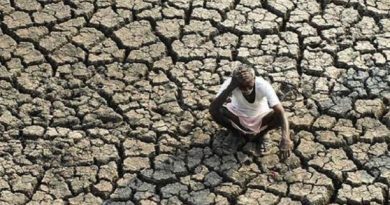Amidst Monsoon Woes, CWC Storage Report Offers Good News

After stop-start progress till July, India’s annual monsoon rains gathered pace in August with the country receiving 24% above average rainfall with more heavy rains predicted, bringing cheer to farmers and filling up India’s reservoirs.
Though the floods that inevitably follow have caused damage and brought misery too, the rainfall has been well spread across the country this year helping farmers plant summer crops in more areas which can only bring some relief to India’s planners who are working ahead to mitigate the damage caused to India’s economy from the coronavirus induced lockdown.
In fact, most analysts have marked out rural India as the one bright hope for the rest of the year.
Since India is still heavily dependent on its seasonal rains led by monsoon for its year-round supply of freshwater for irrigation and drinking, this year’s plentiful rains have filled up India’s reservoirs to 77% of its total capacity.
Data released by Central Water Commission (CWC), which monitors live storage status of 123 reservoirs of the country constituting 66 per cent of total reservoir capacity in the country, showed that the total cumulative capacity of the reservoirs currently stands at 131.172 BCM. This is 77% of the total live storage capacity of these reservoirs.
According to the data, last year the live storage available in these reservoirs for the corresponding period was 129.027 BCM and the average of last 10 years live storage was 109.839 BCM.
This then makes current storage available at 102% of the storage of the corresponding period of last year and 119% of storage of average of the last ten years. An indicator that the extended monsoon last year has left its mark for this year too.
Since 43 of the 123 reservoirs have hydropower generation available with an installed capacity of more than 60 GW, this year’s bounty will help India with its hydel power generation too, though slugging power demand might be a dampener there too.
This year’s rainfall has been average or above average in 32 of its 36 meteorological subdivisions according to the Indian Meteorological Department which tracks the progress of monsoon.
In a country where legal interventions are becoming commonplace to oversee water sharing between states sharing rivers, the current data augurs well those who are completely dependent on this stored water.
In the Cauvery delta, for instance, the samba crop was grown after years last year, thanks to the above-normal rains. Samba is a type of rice (also called Gobindbhog in East India) grown in the August-January period.
Broken down by region, the 8 reservoirs in India’s northern region which include the states of Himachal Pradesh, Punjab and Rajasthan, are the only group where the storage is less than the corresponding period of last year and is also less than the average storage of last ten years during the same period.
Storage in the 18 reservoirs in the eastern region, which includes States of Jharkhand, Odisha, West Bengal, Tripura and Nagaland, is equal to the corresponding period of last year and is better than the average storage of last ten years during the corresponding period.
The remaining reservoirs in western, central and southern regions have all done better this year with storage in all three regions better than the corresponding period of last year and also better than the average storage of last ten years during the same period.
The data also showed that Jharkhand, West Bengal, Tripura, Nagaland, Maharashtra, Uttar Pradesh, Uttarakhand, Madhya Pradesh, Chhattisgarh, Andhra Pradesh, Telangana and Kerala have recorded more storage than last year for the corresponding period.
Himachal Pradesh, Punjab, Rajasthan, Odisha, Gujarat, Karnataka and Tamil Nadu were the states where reservoirs recorded lesser storage than last year for the corresponding period.
With more rains forecast by the IMD in the remaining days of August and then with the onset of the returning monsoon just weeks away, India can sit comfortably till the next monsoon season with its reservoirs nearly full and with the hope of more.
The doomsday scenario of cities going without groundwater in 2020 as predicted in a study by Niti Aayog in 2018, looks averted for now.




